The filmmaking process can be broken up into a series of stages. Perhaps the most demanding of these stages is production. The production stage is not for the faint of heart, and it can make or break a movie. But what is film production? And what does it usually look like?
What is film production?
Production in film explained
The term “film production” has two distinct definitions. Sometimes, when someone refers to film production, they are referring to the entirety of the filmmaking process, from the development of the idea to distribution to theaters. This isn’t necessarily wrong, but today we’ll be looking at a more narrow definition.
FILM PRODUCTION DEFINITION
What is Film Production?
Film production refers to the stage in filmmaking when the movie is being captured. On a live-action set, this is when the camera finally rolls. The planning has occurred in pre-production, and now the cast and crew are on set, ready to film. Production concludes when the shooting concludes. After production comes post-production, where the film is edited. It should be noted that production can overlap with both pre- and post-production. The production office may still be planning later days in a shoot when the shoot has already commenced. Similarly, an editor may start cutting together footage before all of the footage is captured.
Goals of Movie Production:
- Capture all necessary footage
- Stay on schedule
- Stay within budget
- Maintain a respectful set
What is film production?
Planning the production
As we’ve noted, most of the planning for the production stage happens during pre-production, but there are additional logistics that need to be taken care of on a day-to-day basis once production has begun.
One of the most crucial figures for this aspect of production is the line producer. This is the person who is on the ground putting out the fires that arise everyday on set. It is their responsibility to make sure the set is running smoothly. Here the job in a line producer’s own words:
Line producer interview • What is film production?
The first assistant director is also massively important in this area. Their responsibilities are myriad, but, in a broad sense, their job is to make sure that the director and crew can focus on their work and not have to worry about logistics. They also are tasked with the unenviable job of making sure the shoot is on schedule.
Staying on schedule is critical. A director and their team has to get a certain amount of pages done each day, in accordance to the schedule the AD sketched out in pre-production. If they fall behind, that means more money, more logistical headaches, and a stressed crew. It’s the AD’s job to make sure this doesn’t happen.
Assistant director Don Sparks explains the role:
Don Sparks interview • Subscribe on YouTube
A second assistant director helps the first AD in this role, and often is the one working with the production coordinator to make call sheets each day.
Speaking of call sheets – these are arguably the most important documents during the production stage. Without a call sheet, your crew doesn’t show up in the morning (or night, whenever you’re shooting).
A call sheet outlines where and when a cast and crew need to arrive, and also provide other need-to-know information, like weather, parking suggestions, personnel contact info, and the nearest hospital.
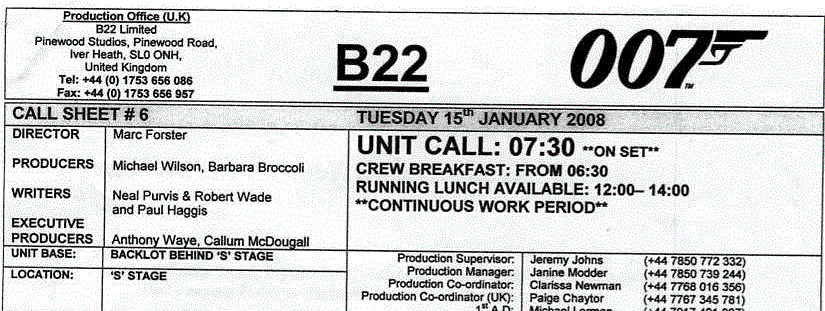
Call sheet for James Bond • Stages of film production
Planning for production means planning for things to go wrong– a line producer and the rest of the production department never wants to be caught flat footed. This might mean having a cover set secured, which is an alternate filming location in case the primary set isn’t available.
All this planning may not be the most glamorous part of production, but without it, the rest of the process falls apart.
What is film production?
The roles on set
The planning for production typically falls under the purview of the production department. But there are many more departments and roles that are present on set.
The primary division between roles on set is above the line and below the line. Above the line positions are some of the top positions in a film, including the director, producer, and executive producer. These are people who are with the project from start to finish.
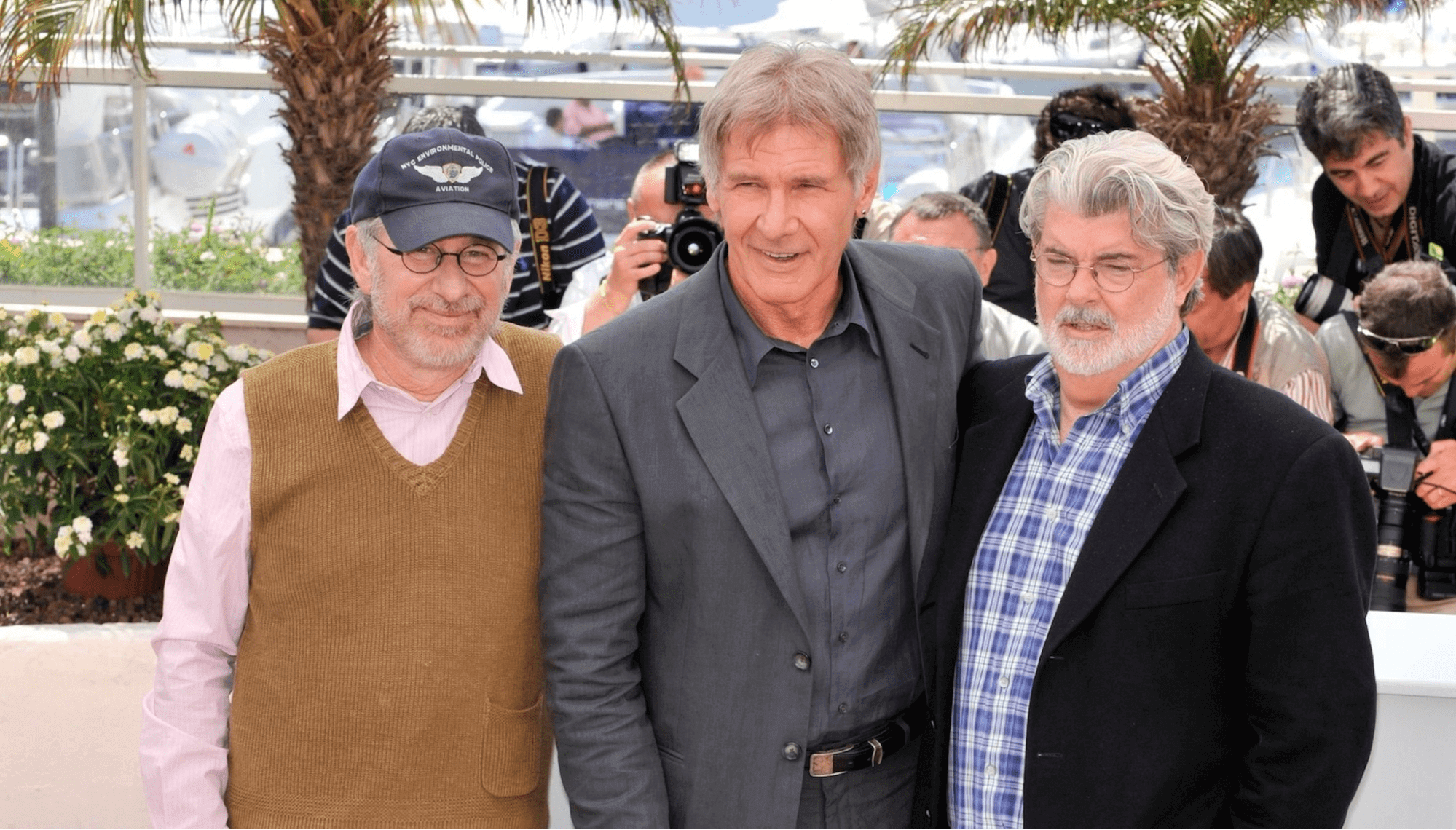
A few above the line men • Production in movies
Most positions on a set, however, are below the line. Let’s go through a few of these departments.
Art Department
The art department is responsible for the overall aesthetic of a film. Almost anything in front of the camera that isn’t the actor is the responsibility of the art department.
The head of the department is the production designer. The PD is the architect of a film’s visual palette, working with the director and producer to get the desired look.

Production designer Jack Fisk • Production in film
Once decided, the art director will see through the production designer’s vision. They get into the nitty gritty, trying to achieve a visual continuity from shot to shot.
Other positions in the art department include the set decorator, set dressers, construction coordinator, carpenters, and art department production assistants.
Camera Department
The camera department is helmed by the director of photography. The DP is in charge of the shot. How is it lit, how is it framed, how is it captured, and so on.
The DP is aided by the camera operator who, wait for it, operates the camera in accordance with the cinematographer’s vision.
Sometimes the DP is their own cam op.
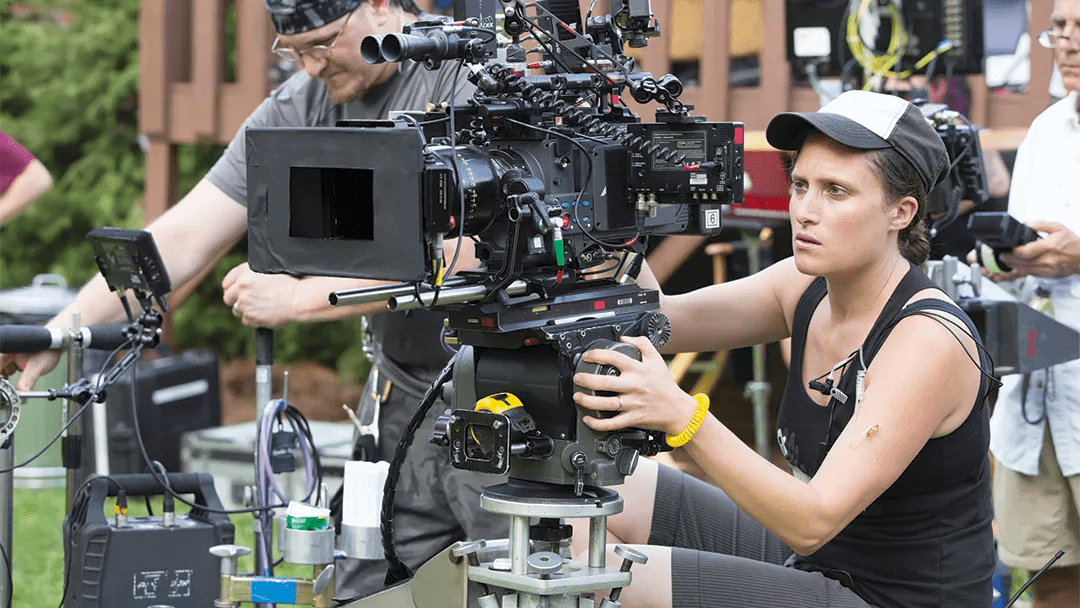
Cinematographer Rachel Morrison • Film production process
The first assistant camera is in charge of pulling focus, while the second assistant camera is the clapper loader and is responsible for the organizational aspects of the department.
Costume and Wardrobe
The costume designer is in charge of the costume department, both coming up with costumes and overseeing their creation.
Other members of the costume department include the assistant costume designer, key costumers, seamstress, and shoppers.
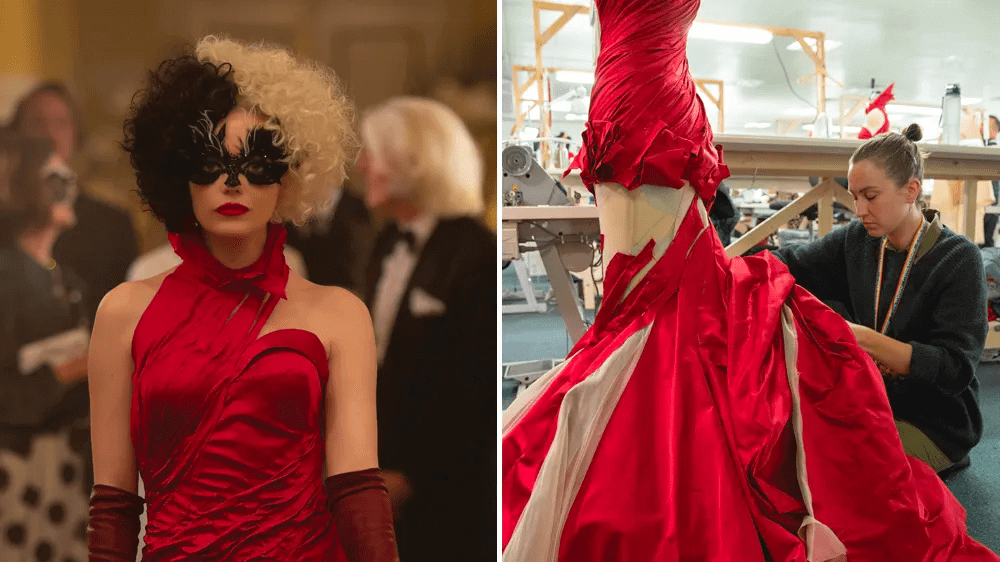
Costume design in action • Production film making
Electrical Department
The electrical department, led by the gaffer, is in charge of lights. They work closely with the DP to choose the right lights for the scene.
The gaffer is aided by the best boy electric, who is in charge of the logistical aspects of the department, like scheduling and keeping an eye on rentals.
Rigging electricians, meanwhile, set up long before shooting starts, essentially ensuring that electricity will get where it needs to be for a given scene.
The grip and electric departments, explained • Define production in film
Grip Department
The grip department is all about rigging. They set up light stands, cranes, dollies — anything that holds lights or camera. The department head is called the key grip.
The key grip’s right hand is the best boy grip, who makes sure things are running smoothly and is also in charge of payroll.
Sound
What’s a modern movie without sound? This department is led by the production sound mixer, who is watching levels and overseeing the placement of different microphones on set.
Other sound team members include the boom operator and the sound utility.
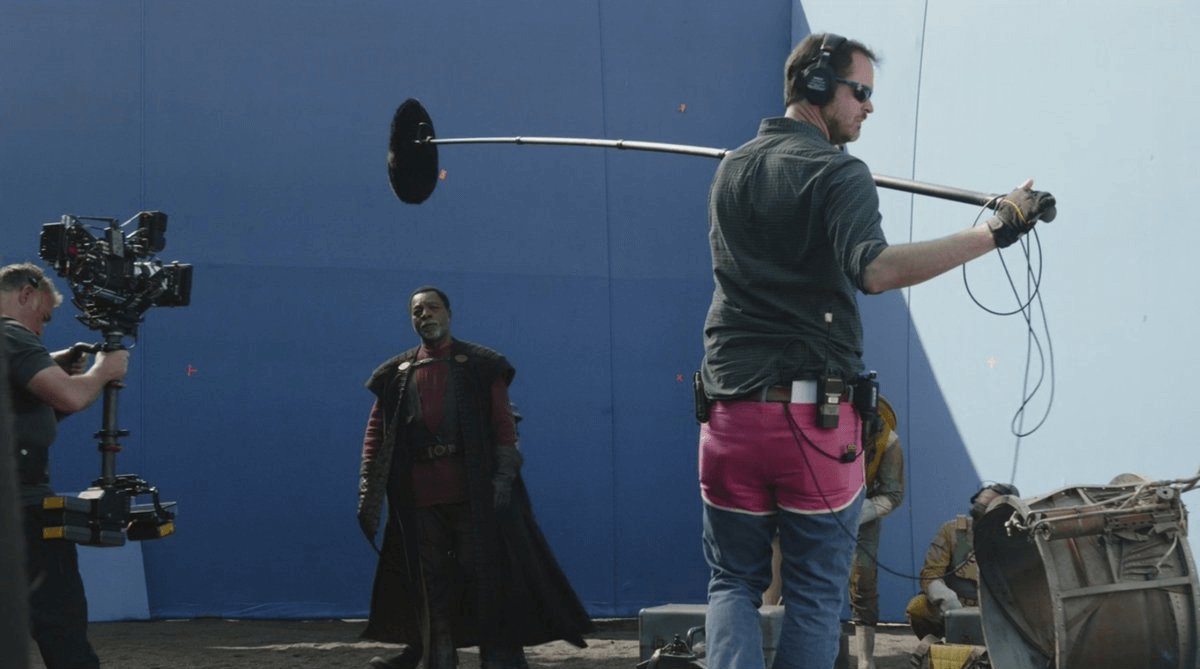
Boom operator at work • Phases of film production
Special Effects
Special effects typically refers to practical effects: the effects that are happening on set, not on a computer. Explosions, car crashes, rainstorms – these are all the responsibility of the special effects department.
The department is helmed by the special effects coordinator, and other positions within it include the special effects foreman, special effects technicians, and armorer.
SPFX Supervisor Chris Corbould Interview
Stunts
The stunts department, led by the stunt coordinator, is responsible for executing stunts safely. Safety is the stunt coordinator’s primary concern, as well as hiring the stunt performers.
This list is far from comprehensive. Sets can be massive, with hundreds of different moving parts. For more, check out our in-depth rundown on film positions.
What does it mean to produce a movie?
A typical day on set
Now that we know who’s on set, let’s look at what happens on set. Of course, every film is different and therefore every production is different, but there are some general outlines that most shoots follow.
Set Up
Before the camera operators hit record, the electric and grip departments are setting up the lights and rigs necessary for the scene. As such, they are some of the earliest arrivals on set.
Members of the art department, too, may be hard at work early in the day. Typically, the set is pretty close to ready to go by the time the shoot day rolls around, but things always change, and finishing touches may need to be applied.

The set up • Movie production process
While the crew is hard at work prepping, the actors will be getting into costume with the aid of the costume department, and applying the necessary makeup with the aid of the hair and makeup department.
The actors then may work with the director to block out the scene with a few rehearsals before the cameras roll. Typically, the camera and sound department watch these rehearsals to get a sense of what they’ll need to be covering.
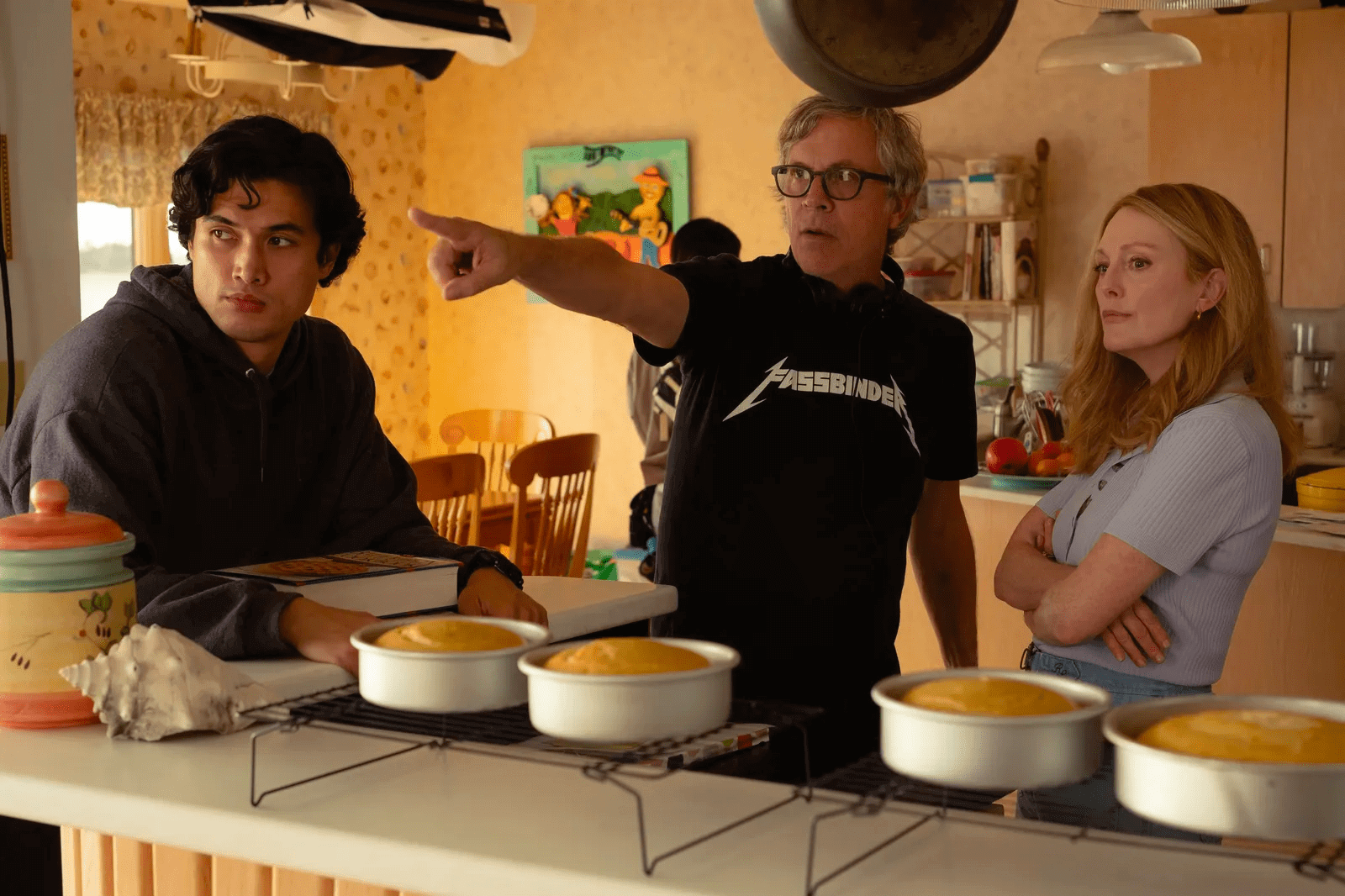
May December behind the scenes • Film production meaning
Rolling
Finally, the moment we’ve all been waiting for. But don’t press record just yet. When the cast and crew are ready to go, the assistant director will say, “Picture is up.” They’ll call for quiet and then announce, “Roll sound.”
With that, the sound mixer will begin recording and respond, “Sound speeds.”
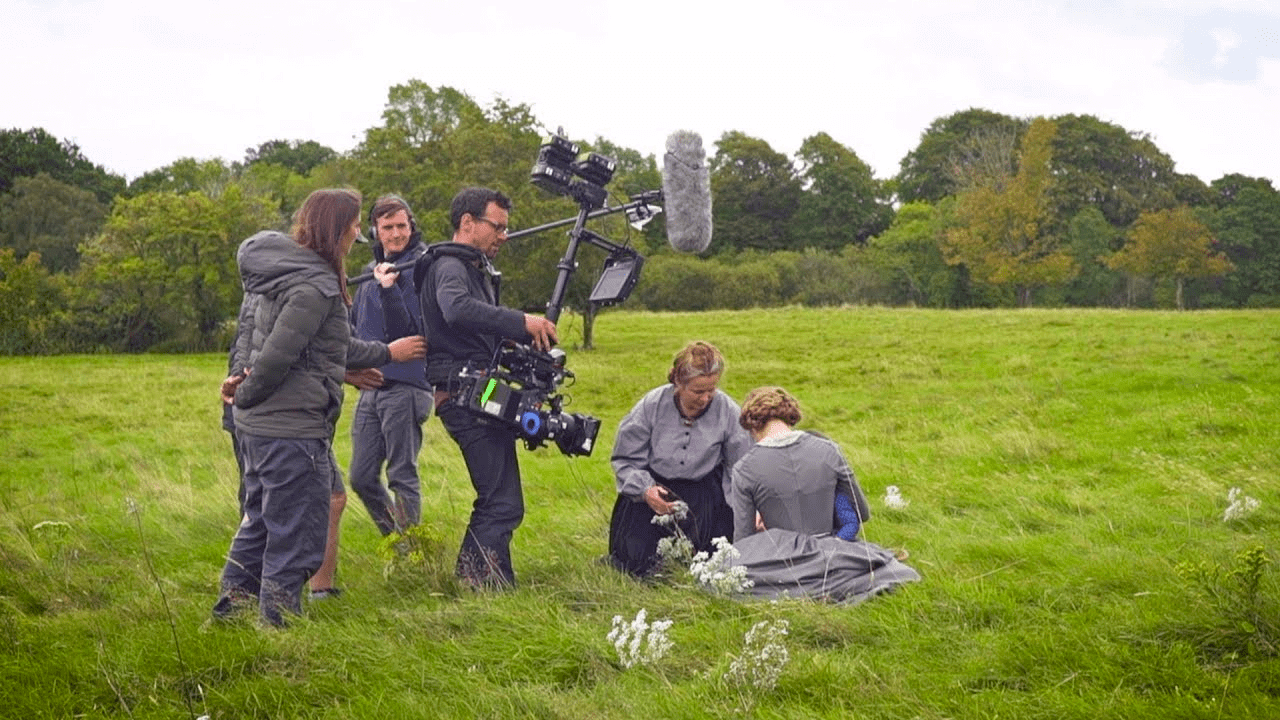
Little Women BTS • What is film production?
Next, the assistant director will say, “Roll camera.” This is the camera operator’s cue to start recording, and once they do, they’ll say, “Speed.” Why speed? Back when film was in vogue, it took a moment for the camera to start recording at the correct frame rate, so the operator would wait until it was up to speed.
With camera and sound rolling, the second assistant camera will slate the clapperboard. For more on the slating process (which is an entire beast unto itself), check out our video:
The clapper, explained • Subscribe on YouTube
The second AC will remove the slate, and the camera operator will adjust the camera as necessary to get to the right starting position. When they’re ready, they’ll say something like, “Frame.”
If there are extras involved, the AD will then instruct them to start doing what they’ve been directed to do by saying, “Background.”
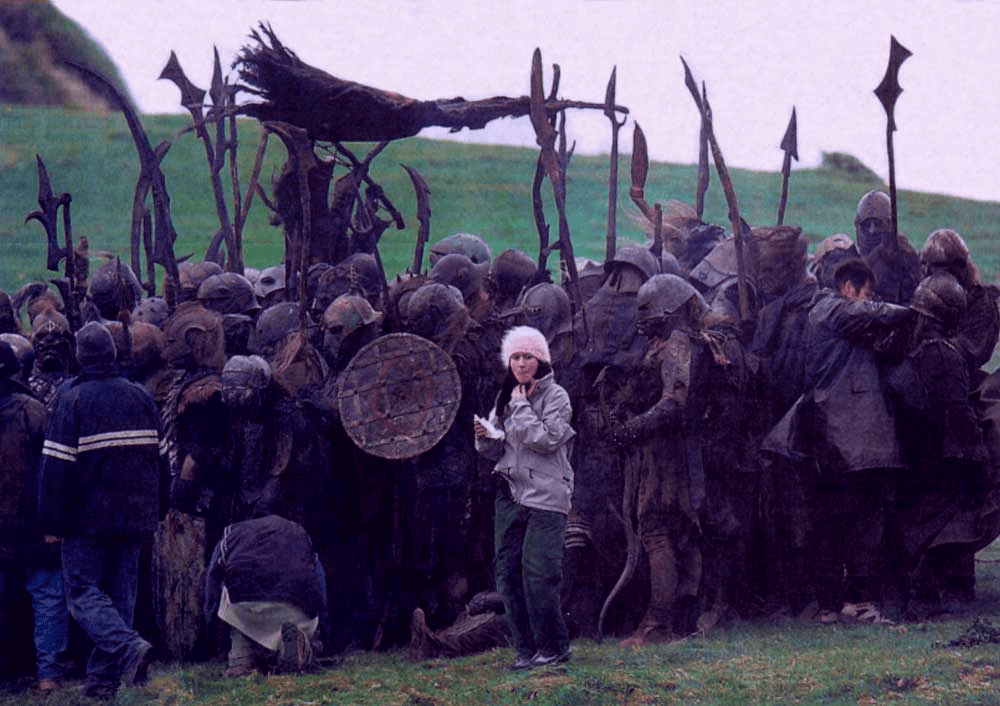
Many extras on Lord of the Rings • What is film production?
At long last, the director will say, “Action,” and the scene is off until she says, “Cut.”
The director and the producers may be watching the footage from video village, a collection of monitors and chairs for above-the-line viewers. But some directors prefer being by the camera and seeing the scene for themselves. It’s personal preference.
After the Shot
After a shot is completed, the crew will reset if the director feels there needs to be another take. If the camera’s card is getting full, the digital imaging technician (DIT) will be in charge of offloading the footage into the DIT station.
The script supervisor, meanwhile, will note what has been filmed, and what happened during each take. If there are any changes to the script, they’ll mark it, and they’ll call out any continuity mistakes when they arise.
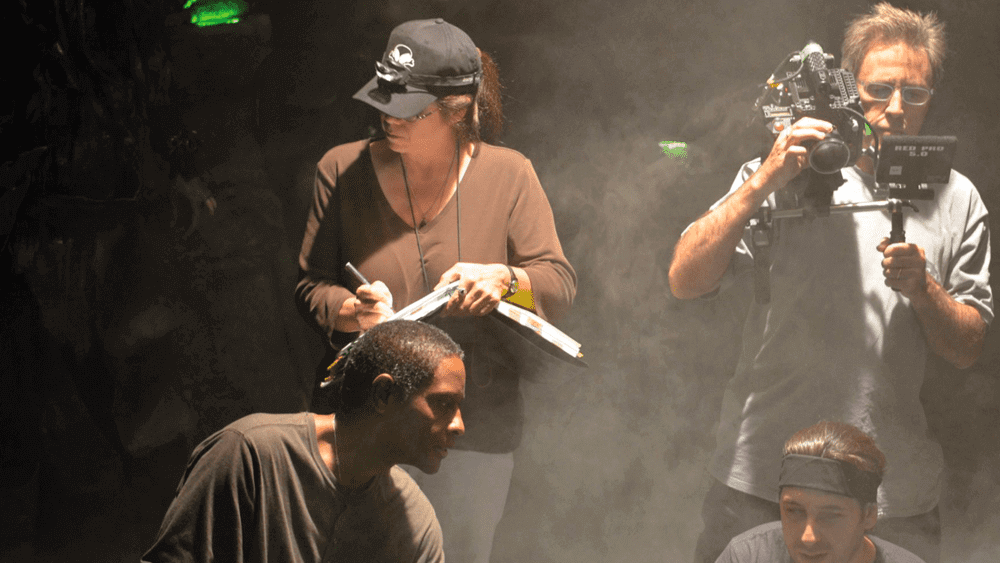
Script supervisor at work • What is film production?
Of course, there are also meal breaks, with food provided by craft services. This is a crucial part of the day, because if a cast and crew don’t get the union-mandated time to eat, the shoot will be subject to fines referred to as meal penalties. Also, your crew will get hungry, which isn’t great.
Once a shoot has concluded at a location, there will be a company move where the crew moves all their stuff to the next spot.
The final shot of the day is called the Abby Singer, while the last shot of the day is called the martini. Once the martini’s complete, the crew will do all the breaking down of equipment and the set that’s required.
The time between the end of one shoot day and the next is called the turnaround time. Typically it’s not supposed to be shorter than 10-12 hours.
When turnaround time is up, the cast and crew does it all again. And again. And again. Production’s hard work, but if it’s done right, it can be a rewarding team effort that results in a great movie.
Up Next
What is post-production?
But wait, there’s more! When production is complete, there is still a whole lot of work to do. This work is called post-production, and it contains editing, visual effects, music, and more. In other words, it’s where the movie comes together into its final form.
Up Next: Post-production →
Showcase your vision with elegant shot lists and storyboards.
Create robust and customizable shot lists. Upload images to make storyboards and slideshows.
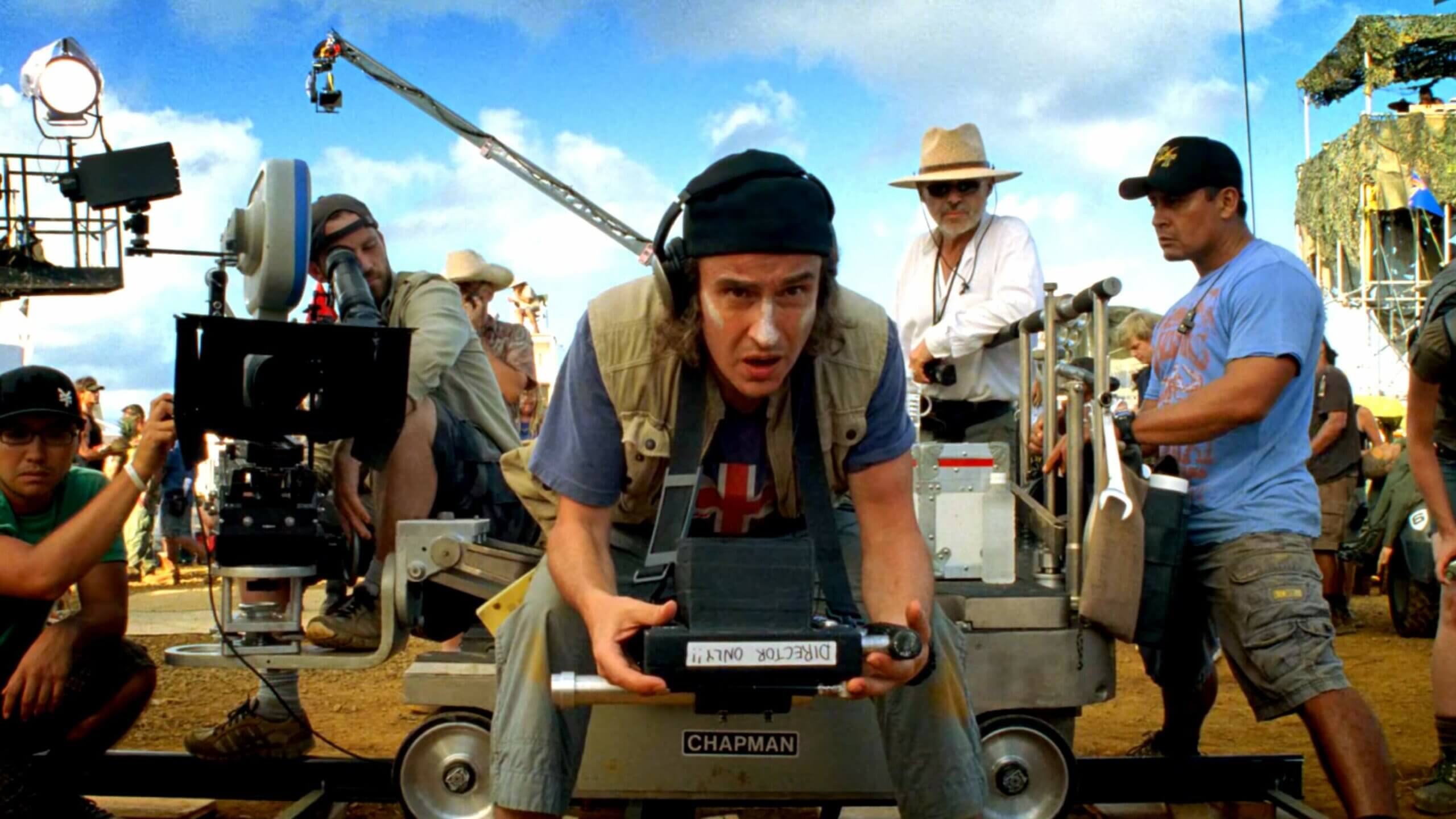
Hello, Studiobinder I have learned more from your videos and articles, I just noticed your hamburger menu is not working, please rectify the problem i wish to learn more from you.
Thankyou…